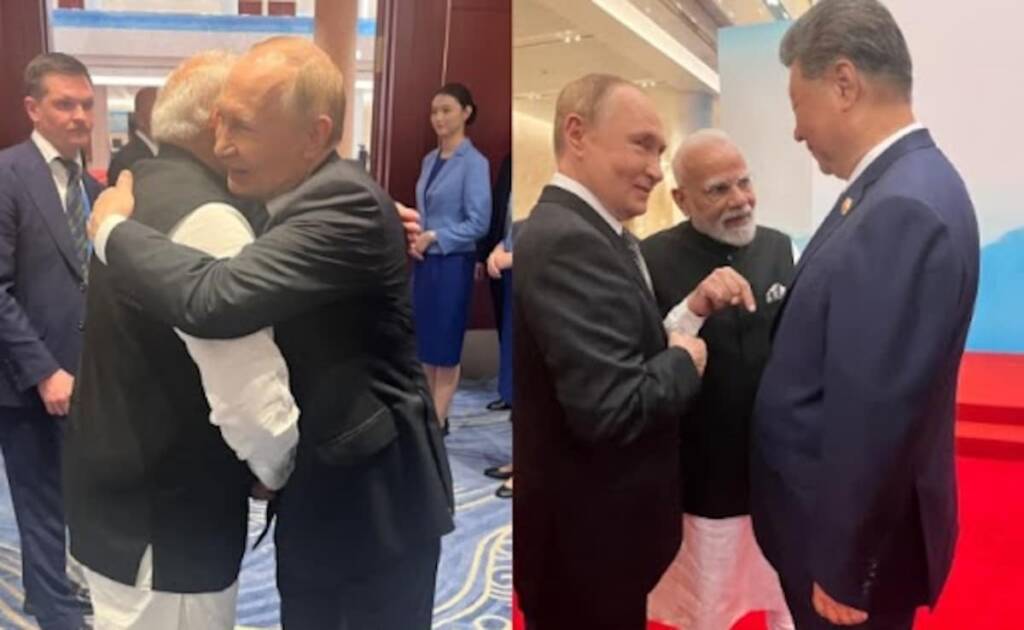In a development that underscores changing global trade dynamics, India has reportedly begun settling some payments for Russian oil in Chinese yuan. This shift, driven by sanctions, discounts, and strategic recalibrations, hints at deeper economic alignment among Russia, India, and China (RIC). As the world edges toward multipolarity, the RIC trio appears to be laying the groundwork for greater economic independence — and potentially, a quiet decoupling from the Western-led financial order.
India pivots to Yuan Energy Trade
Historically, oil transactions have been almost exclusively denominated in US dollars, underpinning the so-called “petrodollar” system that has dominated global finance for decades. However, the geopolitical fallout from Russia’s war in Ukraine — particularly sanctions imposed by the US and EU — has disrupted this paradigm.
India, keen to secure affordable energy supplies while maintaining a delicate diplomatic balance, has continued purchasing Russian crude oil at discounted rates. But paying in dollars is increasingly fraught, leading Indian refiners to explore alternative currencies. Among these, the Chinese yuan has emerged as a pragmatic solution, enabling smooth transactions without triggering Western sanctions.
Though India and China share a tense border and geopolitical rivalry, economic realism appears to be driving this currency choice. For India, the priority is energy security and cost-efficiency. For Russia, the priority is getting paid without relying on Western banking channels. For China, it’s an opportunity to internationalize the yuan and assert influence over Eurasian trade.
RIC Integration: From Talk to Trade
The RIC framework — originally conceived in the late 1990s as a trilateral dialogue platform — is now evolving into something more substantial. Though not a formal alliance like NATO, the group is exhibiting signs of growing cohesion, especially economically.
Russia, facing economic isolation from the West, has accelerated its pivot to the East. China, amid intensifying rivalry with the US, is deepening its Belt and Road outreach. India, traditionally non-aligned, is tactically expanding its trade and energy cooperation with both.
While deep strategic mistrust remains — especially between India and China — economic necessity is creating overlapping interests.
Payments in yuan, increasing bilateral trade, and shared platforms like BRICS and the Shanghai Cooperation Organisation (SCO) all signal a gradual convergence, at least in the economic sphere.
The Trump Effect: Legacy of Tariffs and Tensions
The seeds of this eastward realignment have been arguably sown by the Trump administration. Under President Donald Trump, the US abandoned multilateralism in favor of a more transactional, nationalist trade policy. The imposition of tariffs on China and India and even traditional allies created ripples that continue to shape global trade strategies.
Trump’s “America First” doctrine accelerated the desire — especially in Asia — to build resilient, self-reliant trade networks outside the orbit of Western institutions. Even though the Biden administration has sought to restore alliances, many of Trump’s tariffs remain in place, and economic nationalism is still a driving force in US policy.
For India, which has long prized “strategic autonomy,” this has translated into a hedging strategy — balancing Western partnerships with Eastern opportunities.
A New Trade Architecture: Russia, India, China
India’s willingness to use the yuan for oil payments reflects more than just circumstantial necessity. It points toward an emerging reality: a world in which trade is increasingly multipolar and multi-currency.
As more countries in Asia, Africa, and Latin America look to reduce dependence on the US dollar — either to avoid sanctions or reduce volatility — alternative payment systems are gaining traction. China’s yuan, though still far from dethroning the dollar, is becoming more prominent in global trade, especially among countries in the Global South.
India’s pivot may not be ideological, but it’s undeniably strategic — a move toward flexibility in a world where the old financial architecture is showing cracks.
India’s use of the yuan to purchase Russian oil is more than just a workaround — it’s a symptom of deeper shifts in global power and trade. While RIC remains an informal group, its economic ties are growing stronger, especially as Western influence recedes in parts of the world.
This realignment signals an open break with the West. It reflects a world in transition — one where countries are increasingly asserting autonomy, diversifying partnerships, and building alternative systems of trade and finance. In this landscape, India, Russia, and China are quietly redrawing the map of global commerce.
